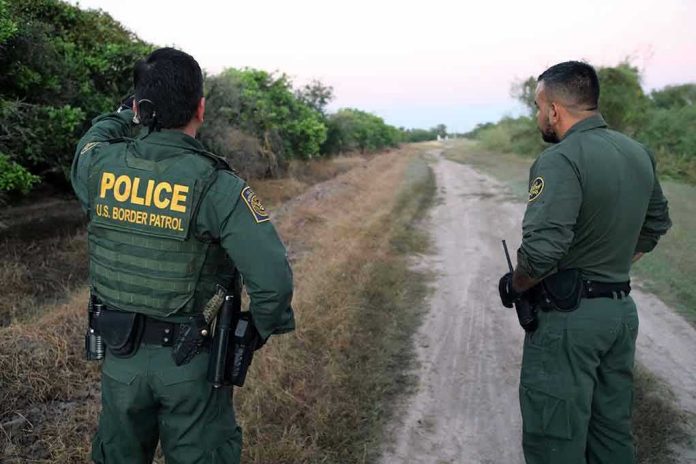
In a year marked by significant shifts in U.S. immigration policies, the House Rules Committee has approved a substantial $12 billion allocation for states supporting border-related immigration enforcement. This funding comes as part of a broader effort to secure the nation’s borders, amidst a backdrop of declining apprehensions at the southwest border and enhanced cooperation between federal and state law enforcement agencies.
At a Glance
- The House Rules Committee approved $12 billion for states involved in border enforcement efforts.
- The Senate bill includes $10 billion for border barriers and $3.5 billion for immigration-related enforcement reimbursements.
- CBP reported a 93% drop in apprehensions at the southwest border from April 2024 to April 2025.
- Operational Tidal Wave, a recent immigration enforcement initiative in Florida, resulted in the arrest of 1,120 criminal noncitizens.
Border Security and Funding
The recent funding approval reflects a concerted effort by the U.S. government to bolster its border security measures. The $12 billion allocated for states engaged in immigration enforcement is part of a larger strategy that includes constructing physical barriers and enhancing technological surveillance along the borders. This strategy aligns with the administration’s policy to secure the borders through a combination of physical barriers and collaborative law enforcement efforts[3]. In addition to the $12 billion for state-level enforcement, the Senate bill proposes $10 billion for a “State Border Security Reinforcement Fund” to support the construction of border barriers and intercept unauthorized crossings. Furthermore, it includes $3.5 billion for reimbursing state and local governments for costs associated with immigration-related enforcement, detention, and criminal prosecutions[1]. However, these provisions initially faced challenges due to reconciliation rules, which were addressed by clarifying that any authority must conform to existing statutes[1].
Operational Control and Decline in Apprehensions
The U.S. Customs and Border Protection (CBP) has reported a significant decline in apprehensions at the southwest border, citing a 93% drop from April 2024 to April 2025. This decrease is attributed to sustained deterrence and enforcement efforts, which have resulted in fewer attempted crossings[2]. As part of this operational control, CBP focuses on both “at entry” and “at large” apprehensions, working closely with other federal agencies like U.S. Immigration and Customs Enforcement (ICE) and state or local law enforcement to curb illegal migration beyond the border[2].
Collaborative Enforcement Initiatives
The operational success of initiatives like Operational Tidal Wave in Florida highlights the effectiveness of collaborative law enforcement efforts. This operation, conducted from April 21 to April 26, 2025, involved federal, state, and local agencies and resulted in the arrest of 1,120 criminal noncitizens, marking one of the largest such operations in ICE’s history[2]. The arrested individuals included violent offenders, gang members, sex offenders, fugitives, and other public safety threats, with 63% having prior criminal arrests or convictions[2].
Homeland Security Threats
The 2025 Homeland Threat Assessment identifies immigration issues as one of the key threats to homeland security, alongside terrorism, transnational crime, cyber threats, and geopolitical competition. This assessment underscores the complexity of immigration-related challenges and the need for comprehensive strategies to address them[4].
Conclusion
The recent developments in U.S. border security reflect a multifaceted approach to address immigration challenges. From significant funding allocations to collaborative enforcement initiatives, these efforts aim to enhance operational control and deter illegal crossings. However, they also raise questions about the balance between securing borders and addressing humanitarian needs, highlighting the ongoing debate over immigration policies and their implications for American society.
Sources:
American Immigration Council: House Reconciliation Bill on Immigration and Border Security
IDGA: CBP’s Primary Mission Areas in 2025
The White House: Securing Our Borders
Department of Homeland Security: 2025 Homeland Threat Assessment













